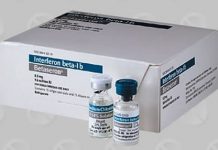Each of the four companies that the U.S. Food and Drug Administration (FDA) approved to produce the Novel A (H1N1) swine flu vaccine for injection uses a different mixture of ingredients, along with the inactivated virus. Each formula has been approved for different age groups as well. The only company that has FDA approval to produce a swine flu injection for children under the age of four years is Sanofi Pasteur, Inc.
Infant Swine Flu Vaccine
The infant swine flu vaccine is produced by Sanofi Pasteur, Inc. for babies all the way down to six months of age. Testing has not yet been completed to ensure the correct dosage, so dosage has been estimated based on other influenza vaccinations. Current dosage recommendations for infants require two separate doses of the swine flu vaccine. The manufacturer recommends that infants receive a second dose approximately one month after the first dose to ensure maximum immunity.
Ingredients in the Infant H1N1 Vaccine
The multi-dose formulation of the infant H1N1 vaccine contains thimerosal, which is a preservative containing mercury. The single dose preparation contains no thimerosal. Otherwise, the two formulations are identical, and contain the following ingredients: gelatin, sucrose (sugar), formaldehyde, and polyethylene glycol p-isooctylphenyl ether.
Thimerosal in the Swine Flu Vaccine
Thimerosal is a mercury-based preservative used in many vaccines, particularly in multi-dose vials. Preservatives in vaccines prevent the growth of bacteria and fungi, which can occur between uses of the vial. Since the 1990s, the use of thimerosal in children’s vaccines has been discouraged.
A .5 mL dose of the vaccine contains 25 micrograms of mercury, according to the package insert. Each infant dose of swine flu vaccine is .25 mL, exactly one-half the amount of vaccine and mercury, which equals 12.5 micrograms of mercury. The U.S. Environmental Protection Agency uses a formula to state the amount of mercury that an individual can be exposed to without “recognized adverse effects,” of .1 microgram per kilogram of body weight per day. In order to avoid adverse effects, the six month old infant receiving a 12.5 microgram dose must weigh at least 275 lbs.
Formaldehyde in the Sanofi Pasteur Vaccine
Injected vaccines contain dead pieces of the virus in order to stimulate the immune system to create antibodies against the virus without causing an infection with the virus. Formaldehyde is used in vaccines, including the swine flu vaccine used for infants, to kill the virus. Formaldehyde causes both short-term and long-term health risks, and is a known carcinogen, according to the National Cancer Institute.
Polyethylene Glycol P-isooctylphenyl Ether
According to the Material Safety Data Sheet for polyethylene glycol p-isooctylphenyl ether, it is a suspected human carcinogen. When inhaled, it can cause irritation, coughing, and difficulty breathing. Skin or eye exposure can cause painful irritation, as well. Ingestion may cause gastrointestinal distress. This chemical is used in vaccines to break up the pieces of the inactivated virus, during the process of creating a vaccine.












